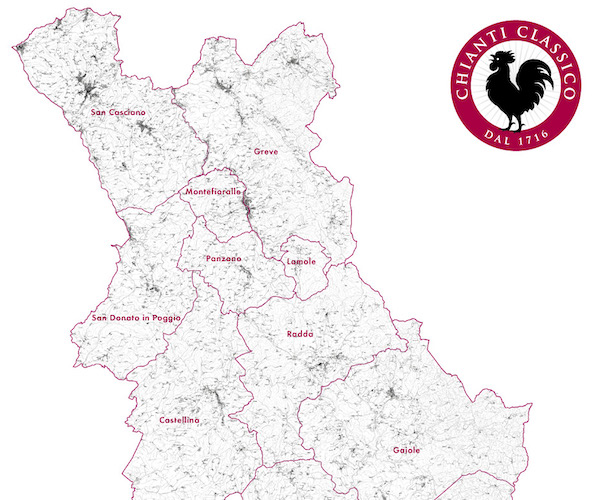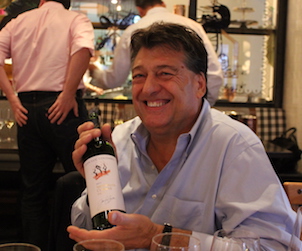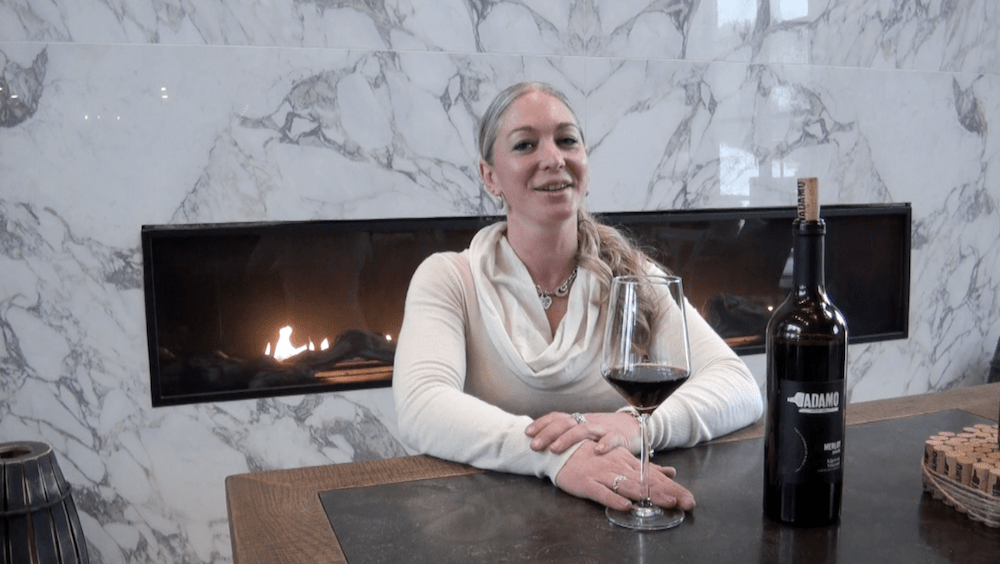Francisco Baettig, Chief Winemaker at Chile’s Vinas Errazuriz, was at the Toronto Hunt Club for a winemaker dinner this month staged with agent Philippe Dandurand Wines. He sat down with me beforehand to discuss Errazuriz’s evolving philosophy in winemaking.
Vinas Errazuriz was founded in 1870 by Don Maximiano Errazuriz and is run by 6th generation Eduardo Chadwick. The winery was downsized significantly under Chile’s land reform policies in the early 1960s. Eduardo’s father, Alfonso, eventually lost control to the banks in 1973, but bought it back in 1983. Eduardo joined that year while in his early twenties, took over as President in 1993 and has rebuilt Errazuriz into Chile’s premier family winery. He was able to undertake this major financial commitment because of his ownership of Polar, the third largest Coca Cola bottler in Chile.
Eduardo has been a leader in transforming Chile’s wine industry. In 1988, at a time when Chile was known for exporting entry level wines, he launched Errazuriz’s first ultra-premium red, Don Maximiano Founders Reserve. In 1995, he entered a joint venture with Robert Mondavi of California to produce ‘Sena’, Chile’s first icon Bordeaux-style wine. Because Constellation Brands bought Mondavi in 2003, in early 2004 Eduardo bought Mondavi’s 50% share of the Caliterra and Arboleda brands which the joint venture had launched in 1996 and 1999 respectively.
He has also been innovative in the vineyard. He was the first to move away from the mainstay French varietals of Chile, introducing Syrah in 1993 and Sangiovese in 1997. Under Baettig, who joined as winemaker in 2003, Errazuriz has experimented with different clones, natural yeasts, canopy management and organic and biodynamic techniques. They are also working with cooler climate vineyards to reduce alcohol levels, while preserving the fruit forward characteristics of their elegant, high end wines. To do this, they expanded from their original Aconcagua vineyard, just north of the capital of Santiago, into the cooler climate Manzanar Estate at the west end of the Aconcagua Valley, 12 kilometres from the Pacific Ocean. They are also testing out Mediterranean and Rhone varietals in the cooler parts of their interior vineyards.
Errazuriz produces 50 wines in four tiers – Icons (their top tier, super premium wines); Max Reserva (made from the finest grapes and barrel aged for complexity and structure); Specialty (wines that showcase their innovation, such as Wild Ferment, Italian and Rhone style wines and Late Harvest); and Estate (fruit driven, entry level wines).
Errazuriz Sauvignon Blanc Max Reserva 2011 ($15.95; 13.5%) is made with grapes planted in 2005 at their La Escultura estate vineyard in the Casablanca Valley, 10 kilometres from the Pacific Ocean. This highly aromatic wine keeps you nosing the glass as you enjoy the lemon drop, tropical and tomato leaf scents, with hints of gooseberry and herbal accents in the lively acidic finish.
![]()
Errazuriz Wild Ferment Chardonnay 2010 ($17.95; 13.5%), one of their Specialty wines, is made with 100% native yeast, 100% barrel fermented and aged for 10 months in French oak. Baettig has been paring back the oak influence by gradually reducing the new oak from 50-60% to 10-15%. The 2011 vintage will be even lower, at 5%. This complex wine has an appealing yeasty, grilled toast nose, with ripe melon and lemon curd flavours and good minerality. It has excellent aging potential.
![]()
Errazuriz Max Reserva Cabernet Sauvignon 2010 ($18.95; 14.0%) is made from handpicked, low cropped grapes planted in the 1990s on the Don Maximiano Vineyard. Up to 15% Cabernet Franc is added to embellish the structure of the wine, with 7% appearing in this vintage. Aged for 12 months in barrel, this deep plum purple wine has a wonderful, plush palate of sweet ripe fruit with tobacco, chocolate and balsamic flavours. Its good tannic structure will carry it in the cellar for 5-7 years of aging.
![]()
Errazuriz La Cumbre Syrah 2008 ($79; 14.5%) has 3% Petite Verdot added to the Syrah grapes, which were sourced for the first time from their cool climate vineyards to elevate the spicy component. Aged for 20 months in French oak, La Cumbre (“The Summit”) wine is made in small quantities of only 1,000-2,000 cases. This expressive wine has a balance of red and black fruit, with hints of tobacco, pepper and clove, an underlying caramel aspect and good minerality.
![]()
Errazuriz Don Maximiano Founders Reserve 2008 ($89; 14.5%) is one of their flagship wines from their oldest vineyards, which changed from a 100% Cabernet Sauvignon to a blend with the 2005 vintage. This wine has 84% Cabernet Sauvignon, 8% Carmenere (which gives round, supple tannins and aromatics), 5% Syrah (from warmer vineyards, which delivers black fruit flavours and round tannins) and 3% Petite Verdot. Aged for 20 months in French oak, this structured, aromatic wine has complex notes of cedar, tobacco, black pepper and spice, with subtle herbal nuances from the Carmenere.
![]()
Errazuriz Vinedo Chadwick 2009 ($139; 14.5%) is an inky wine, made with grapes from the Alto Maipo Valley that is known for producing red wines of exceptional quality. It was aged for 22 months in 100% new French oak. Eduardo’s father managed to keep this property from confiscation under the Chilean land reforms and converted it to a polo field to follow his passion. Eduardo persuaded him to plant it to vines. This dense, elegant wine shows ripe red and black cherries and cassis with notes of sweet spice, cigar box and nuts.
![]()
Errazuriz Late Harvest Sauvignon Blanc 2010 ($16.95; 12.0%) has 5-7% Gewurztraminer in the blend which was aged in used oak. It offers floral and citrus aromas in the nose. This wine is surprisingly light on the palate given the intensity of the honey, raisins and apricot flavours in the lingering finish.
![]()
All scores out of five apples.
Barbara D. Ritchie is a wine writer, lecturer and internationally accredited wine judge, who has travelled extensively throughout the main wine growing regions of the world. Her working knowledge of French, Italian, Spanish and German facilitates her in-depth winery profiles. A distinctive aspect to writing is her suggestions for food and wine pairings.








